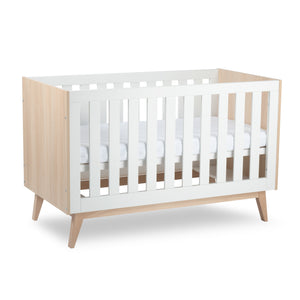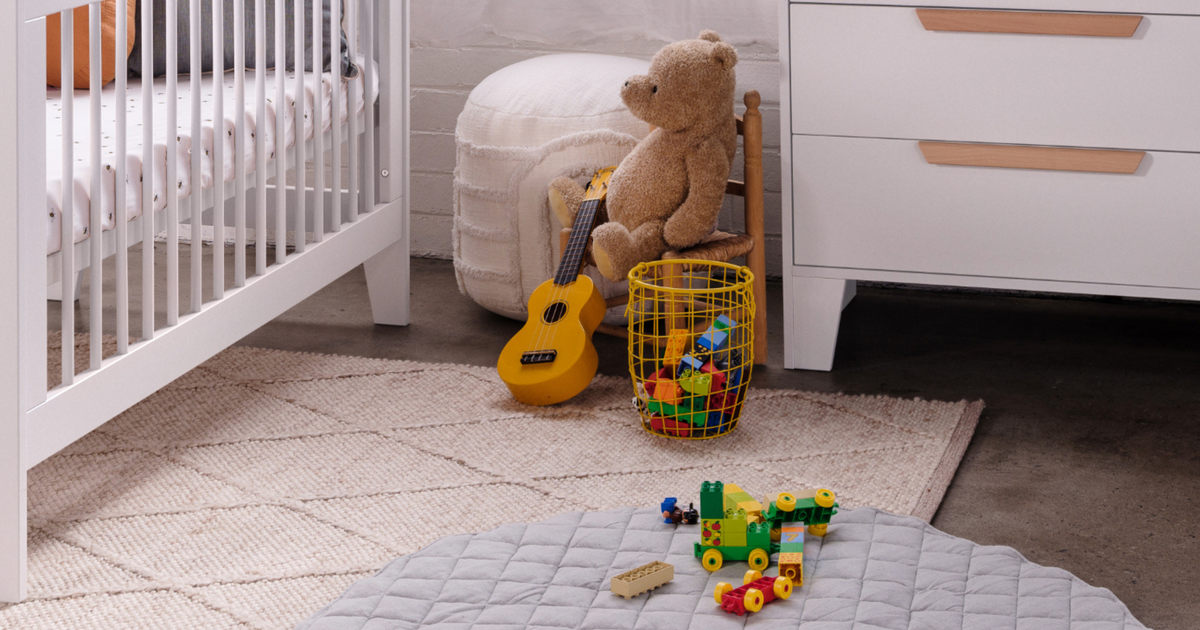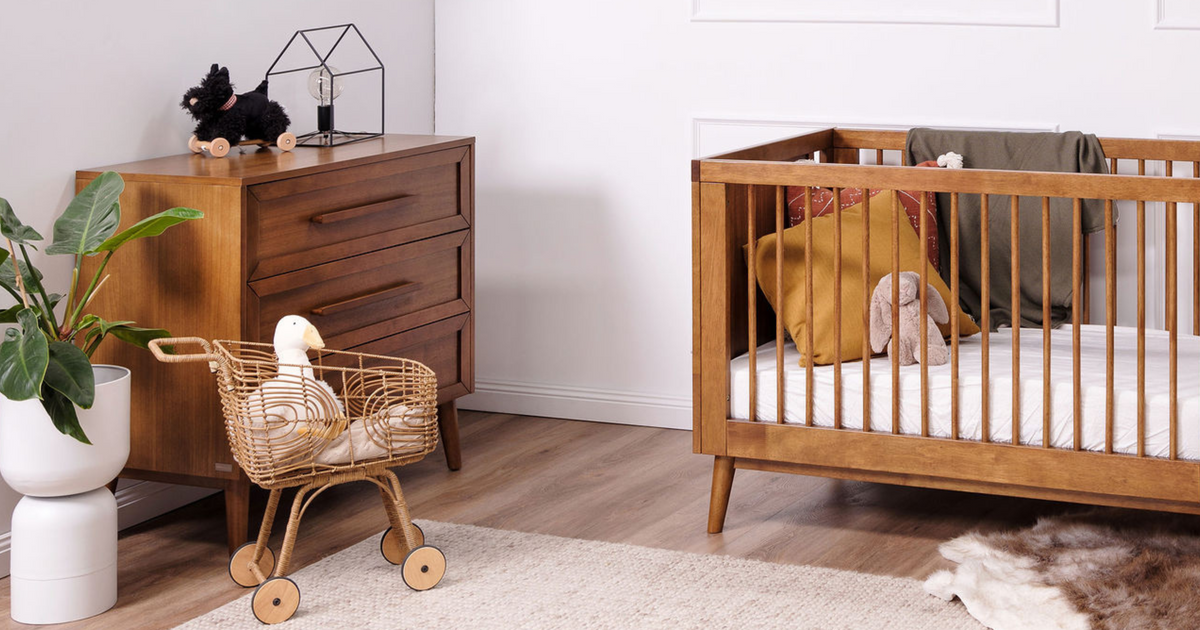How to know when your toddler is ready for a junior bed

Have you reached that golden age of toddler autonomy where they want to do everything by themselves because they are a “big kid” now?
Chances are, you’ve been wondering whether it’s time to switch to a junior bed.
You don’t want to make the change before they’re ready and risk upsetting the delicate bedtime routine you’ve worked hard to establish, so how do you know when it’s the right time? Is it when they start to see themselves as Indiana Jones and their cot as the Temple of Doom, requiring creative escape endeavours 24/7? Or perhaps you’ve got another baby on the way and you need to prepare the cot for them.
The truth is there are no clear-cut rules when it comes to moving a toddler to a junior bed. Every child is different and the ‘right’ time can depend on a range of factors. While around two years may be a good age for some, others will need a little longer, and that’s ok.
After more than 40 years of creating baby products for Aussie parents and parents-to-be, Babyrest has identified three key questions parents have when it comes to the big transition: when to do it, how to do it and getting it to stick. Let’s go through them one-by-one:
Signs your child may be ready to graduate to a junior bed
-
Climbing out of the cot
This one’s a no-brainer, but if your little one has begun Houdini-ing their way out of their cot, it’s best to start putting the junior bed together pronto. A cot isn’t designed to be a jungle gym, and it can quickly become a safety hazard for falls – the last thing any parent wants. A junior bed with 3-in-1 functionality like most of Babyrest’s Cot range is a much safer option at this point as the rail is lower to the ground, while also affording your child more of the freedom they are craving. Toddlers of the escape artist variety will often attempt to do so from around 18 to 24 months old – so keep an eye out.
-
They’re about 90cm tall
Once your child’s chest is visible above the cot railing when they stand, they may have outgrown it. Even if they’re not climbing out of the cot, it could become a safety concern and it’s a good time to start preparing them for the eventual transition.
-
They don’t want to get in their cot anymore
If your toddler no longer wants to get in the cot to sleep or nap, preferring your bed instead, it may be time. Bedtime should ideally be a peaceful and soothing time to stimulate a good night’s rest– not a struggle or tear fest.
-
They’re telling you
While toddlers don’t always know what’s best and are known to change their minds (we’ve seen some hilarious, Oscar-worthy performances from toddlers who suddenly can’t stand their favourite snack), it can be helpful to listen out for repeated cues that they give you. If your child starts telling you that they want a ‘big kid bed’ like their siblings (and they stick with it), it’s a good sign that they may be ready for the next step, or close to.
-
They are toilet-training
If you are toilet-training your toddler, a junior bed can allow them to get to the toilet whenever needed overnight. If they are finding the training hard however, it can be better to let them handle one big thing at a time.
When to DELAY moving to a junior bed
-
Your child has other big changes on their plate
People don’t always respond well to change – especially in big doses. How can we expect any different from toddlers? If your little one is already facing several other big life changes such as starting child care, giving up their dummy, getting a new babysitter, moving house or you are about to go on a big holiday, it may be wise to give them time to get used to those first, before attempting to tackle the transition to a junior bed.
-
They’re telling you
If you’ve brought up the idea of moving to a big bed and they are resisting against the suggestion, it’s better to hold off for a while. If you move them before they’re ready, they could become distressed, have trouble sleeping or start seeking comfort in your room. If you give them a chance, they may warm up to the idea all on their own.
-
They need lots of supervision
Little ones who still wake regularly throughout the night are more likely to start roaming their rooms or accidentally find themselves in other parts of the house unsupervised. Toddlers who are particularly curious and like to touch/ grab/ poke things may be at an increased risk of getting hurt. If the thought of your toddler on the loose makes you twitch, they may not be ready for a junior bed just yet.
-
Your paediatrician says to
If your paediatrician advises you to wait, it could be for a range of reasons, health, behaviour or development-wise. It’s always best to take expert health advice seriously. There’s no rush, and they’ll be in a junior bed before you know it.

How to make the switch to a toddler bed
-
Choose the right bed
You have two options when it comes to choosing the next bed for your toddler: a standard single bed (with a rail) which could last them until they leave home, or a junior bed, which is an ideal in-between. Smaller than a single bed and closer to the floor, it’s designed specifically for toddler needs.
We know that the more comfortable you are, the better you sleep. Aussie brand Babyrest offers a stunning range of cots with 3-in-1 functionality that grows with your child from bassinet, to cot, to junior bed. The longer a toddler has stayed in the cot, the more attached to it they will be, making the transition harder. Simply replacing the existing cot’s side/s with a junior bed rail can help ease your child into the transition more easily.
It’s important to ensure there are no gaps between the bed and the mattress that your child could slip through, and that there is space between the bed and walls to reduce the risk of suffocation.
-
Ease into it
Introducing the bed for “practice” sessions during a few naptimes before implementing it at night can help your toddler associate it with a calm, safe space, making night-time sleeps less intimidating.
-
Keep current routines consistent
As mentioned earlier, too much change at once can be overwhelming for anyone, including toddlers. So when switching to the new bed, make sure the rest of their familiar bedtime routine stays the same.
-
Make sure the house has been thoroughly child-proofed
Once your child can get in and out of their bed throughout the night without supervision, it’s absolutely crucial to check that everything in the room (particularly within arms-reach of your toddler) is child-safe. This can include locking windows, ensuring heavy furniture pieces are securely fastened to the walls, covering any exposed power points and ensuring blinds or curtains do not pose a strangling risk.
Toddlers are very curious and adventurous, so there is also a chance they can get out of their room. Even if you have something in place to prevent them getting out of the room, it’s worth ensuring the rest of the house is as child-safe as possible – especially if you have stairs in your house. A baby monitor can be used to alert you if your little one gets up.
-
New sibling strategies
If you need the cot for an impending sibling, it’s really important to make sure your toddler doesn’t think they are in any way being replaced or displaced. For toddlers who feel particularly attached to the cot and see it as theirs, it can be helpful to begin the transition a month or two before the baby’s arrival (if they are old enough) and have time where the cot is not in use by anyone, and possibly dismantled or stored elsewhere.
Making the new bed stick
-
Make the new bed seem exciting
Toddlers love to emulate people around them, whether siblings, parents or even characters in their favourite books or TV shows. Books with storylines about bedtime and moving to ‘big kid beds’ can be especially helpful here in preparing them ahead of the big move. You can also show them how each member of the family (from grandparents to pets) all sleep in their own beds at night. Use positive language to let them know how proud you are of them, making the move feel exciting and empowering rather than intimidating or sad.
-
Put the new bed where the cot was
Placing the new bed where the cot was - at least initially – will aid in the sense of familiarity to make it feel like less of a big change.
-
Get them to “help”
There’s no better way to get a toddler excited about something than to involve them. Letting your toddler choose some of the new bedding or even a special ‘big kid bed’ teddy will help them feel excited and foster a sense of ownership over their new space.
-
Set clear expectations from the get-go
Now that your toddler can easily get out of bed, you may get a few unsolicited visits throughout the night. Before moving them into the new bed, it’s important you let your toddler know what you expect from them in terms of staying in their beds. You can do this with the help of aids such as books, or stories of other ‘big kids’ who learn to do the same.
-
Reward the small wins
Once your toddler understands what you expect from them, you can use rewards (or a reward chart) like a sticker for every time they go the whole night in their bed. Use positive language to congratulate and encourage this behaviour.
Why Babyrest’s cots with 3-in-1 functionality will benefit you in the long run
Babyrest is a third-generation Australian family-owned and operated business based in Melbourne.
More than 40 years of providing high-quality products, learning from industry experts and speaking to parents has informed the way they design their furniture range. They’ve listened to what parents want, what works and what doesn’t, in order to create timeless, highly practical pieces that grow with your little one.
From newborn to toddler, the 3-in-1 bassinet to junior bed offering seamlessly transition from bassinet, to cot, to junior bed with the addition of the Junior Bed Rail (separate purchase). While older kids are normally happy to get a new bed, toddlers can be very attached to their cots. By transforming their cot into a junior bed, you can help ease the transition during what can be a somewhat emotional period of their lives (little people, big feelings!).
If you’re switching to a junior bed, don’t forget about the mattress or pillow! Babyrest has a wide range of mattresses and pillows available, made right here in Melbourne. Read our cot and junior bed mattress buying guide.
- Shop the Babyrest 3-in1 bassinet to junior bed range →
- Shop Australian-made bedding essentials →
- Shop Babyrest Junior Pillows →
- Shop Babyrest DuoCore mattress with dual-sided baby-to-toddler technology →
Anstel has a team of passionate expert representatives. Get in touch with us today with any questions about your junior bed, mattress or bedding essentials.
Some of us will still remember the thrill of getting to sleep in a ‘big kid bed’ for the first time and it’s no different for our kids – it should be an exciting time! With a balance of preparation and patience, the transition is sure to be a success for everyone involved. We hope the new bed brings your little one lots of joy.
Found this guide helpful? Consider sharing with friends who have toddlers!
Further reading:
- How often should you replace toddler pillows?
- Babyrest Junior Pillow comparison: How to choose the right pillow for your child
- Are expensive baby and toddler mattresses worth it?
- Babyrest DuoCore™ Mattress receives 100% CHOICE recommendation
- Cybex Sport: Introducing the Avi and Zeno sports strollers




